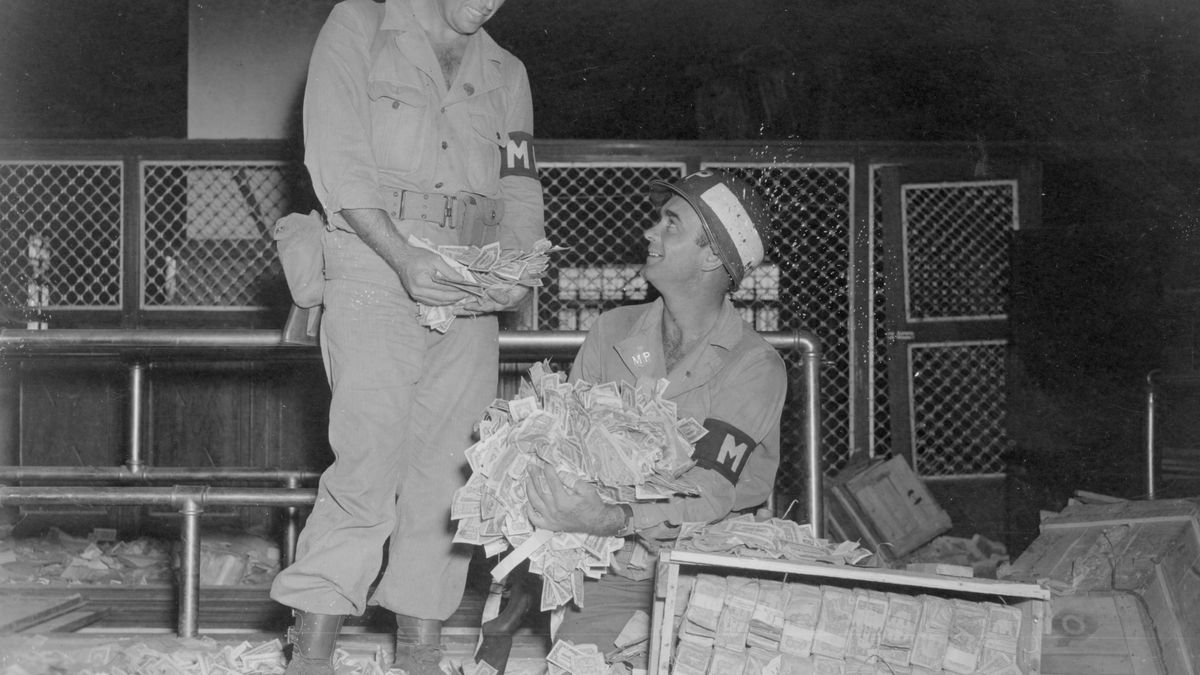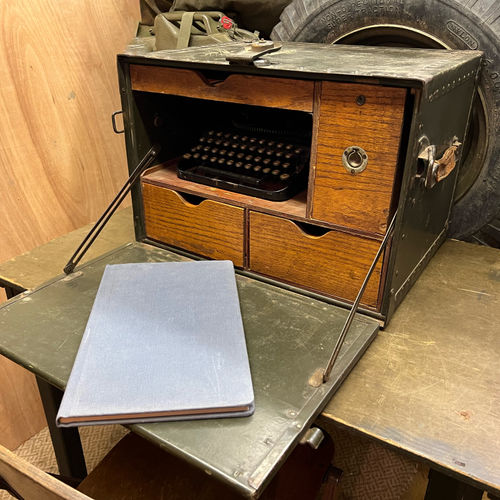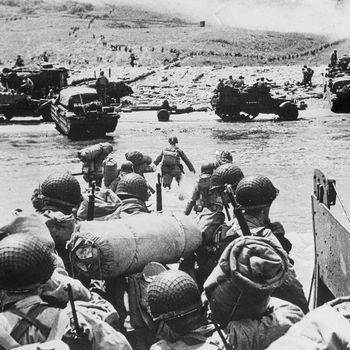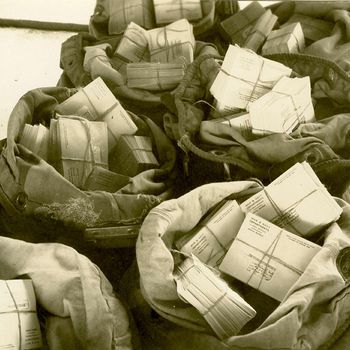Military currencies are issued strictly for the use of troops; they are prepared by a (military) power or Government and declared by the overall commander to be legal tender for use by civilian and/or military personnel as prescribed in the areas occupied by its forces. Military currency should be of a distinctive design so as to be able to distinguish it from the national (i.e. official) currency of the country concerned, but it may be denominated in the monetary unit of either.
In the frame of the overall preparation for the invasion of German-occupied Western Europe, the Allies planned to print and issue special currency, denominated French currency, (aka "Invasion Notes", or "Invasion Currency"), which were supposed to help support scarce and devaluated current French banknotes and serve as a means of payment by Allied troops and citizens stationed in France. It should be noted that the above type of Allied currency had already been introduced in Italy in 1943.
Allied Military Currency (also known as AMC) was printed in the United States under strict security conditions by the Forbes Lithograph Manufacturing Company, Boston, Massachusetts and transported to Britain. For Operation "Neptune", 19 trucks were required to deliver 3 billion French Francs, which were needed to change the British money held by American servicemen into French Military Currency and to cover a partial payment of $4.03 per serviceman. It should be noted that prior to D-Day, Allied servicemen also received current French banknotes, in circulation on the continent.
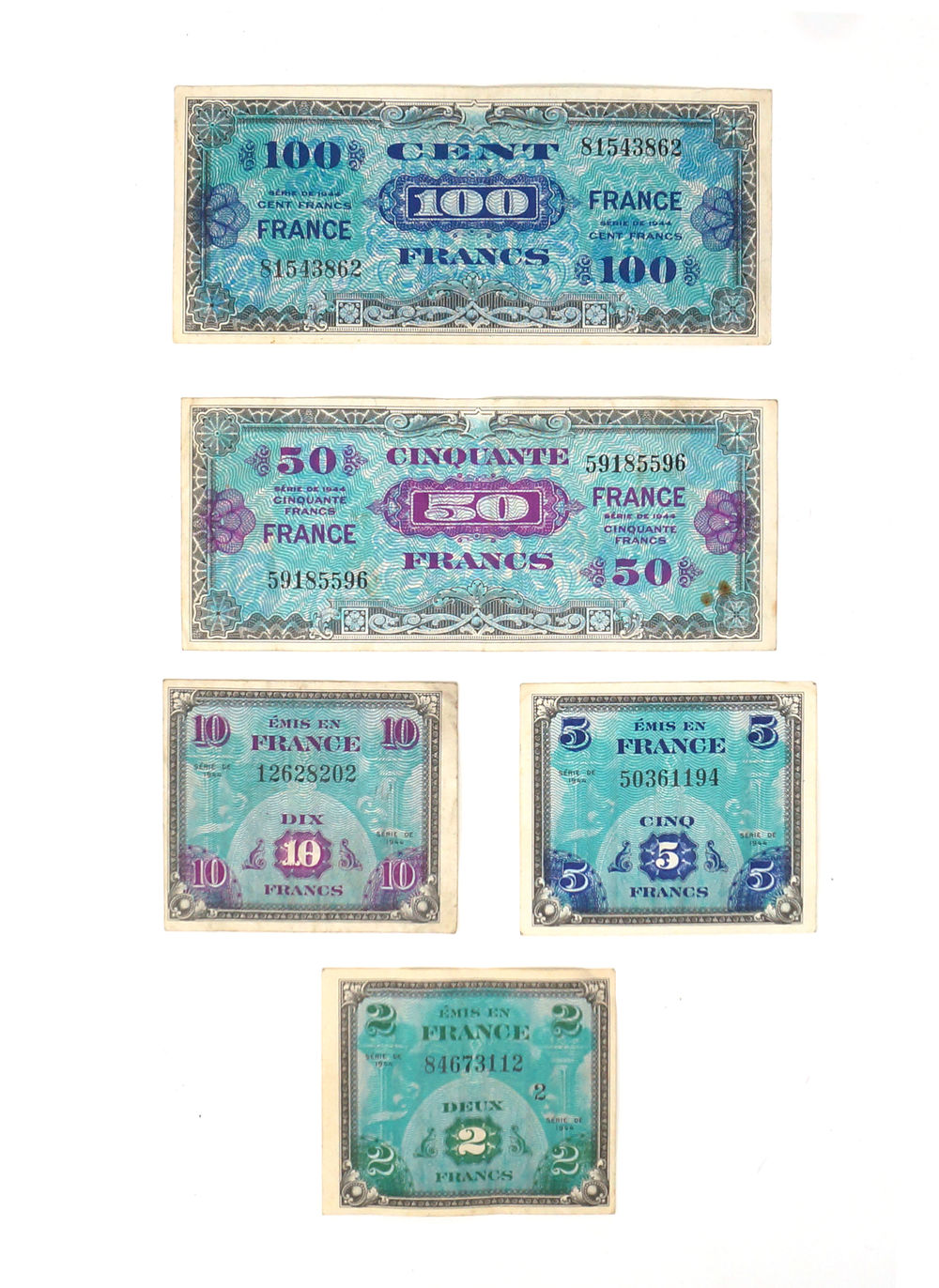
Series of 1944 French Franc Allied Invasion Currency, in denominations of 100 Francs, 50 Francs, 20 Francs, 10 Francs and 5 Francs.
(Author's Collection)
Allied Military Currency used in France consisted of 2 issues, the first being designated Supplemental French Franc Currency. The obverse mentions FRANCE, indicates the amount represented, a serial number, and statements "émis en France" (issued in France) and "série de 1944" (series of 1944), the reverse side shows the French tricolour flag. These notes were of different colours and sizes and were issued in denominations of 2, 5, 10, 50, 100, 500 and 1,000 Francs (5,000 Francs were not issued).
Quantities of notes delivered: 2 Francs (200,000,000) 5 Francs (160,000,000) 10 Francs (80,000,000) 50 Francs (40,000,000) 100 Francs (144,000,000) 500 Francs (20,000,000) 1000 Francs (40,000,000) and 5000 Francs (2,720,000 printed).
The second issue is called Provisional French Franc Currency, while the obverse still mentions FRANCE, with serial number, "série de 1944", but the designation "émis en France" no longer appears. The reverse side only mentions FRANCE (without flag). These banknotes were also printed in the United States and issued with the (reluctant) agreement of the Comité Français de Libération Nationale (French Committee of National Liberation). The US Government instructed 2 printers to handle this second issue of Francs, both Forbes Lithograph Manufacturing Company and the Bureau of Engraving and Printing, Washington, District of Columbia. Denominations were 50 – 100 – 1000 Francs (500 and 5000 Francs, although printed, were not issued).
Quantities of notes printed: 50 Francs (290,000,000) 100 Francs (950,000,000) and 1000 Francs (250,000,000).
Author's note: both issues described above were to be used in Allied-controlled areas of occupation – the second issue (Provisional) replaced the first issue in June 1945, though the 2, 5 and 10 (Supplemental) notes remained in circulation with the new (Provisional) ones until late 1946 – the 50 and 100 (Provisional + Supplemental) Franc notes remained in circulation till 1948.
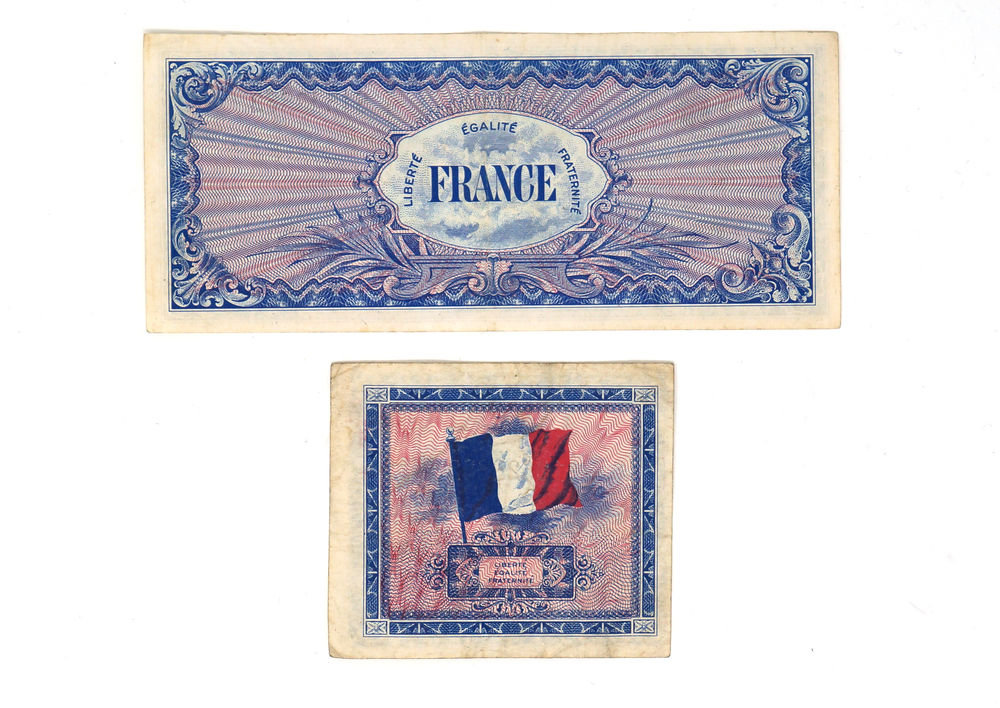
Reverse side of French Franc invasion currency, showing the design used on the large and small notes.
(Author's Collection)
Allied Military Currency was also used in several countries in the ETO as follows:
- Italy in 1943 (denominations 1, 2, 5, 10, 50, 100, 500 and 1000 Lira, printed by Forbes Lithograph Mfg Co, USA), with two different series 1943 and 1943A representing a total of 971,662,000 notes
- Austria in 1944-45 (denominations 50 Groschen; 1, 2, 5, 10, 20, 25, 50, 100 and 1,000 Schilling, printed by Forbes Lithograph Mfg Co, USA; the Bureau of Engraving & Printing, USA; and another British printer)
- Germany in 1944-45 (denominations ½, 1, 5, 10, 20, 50, 100 and 1,000 Mark, printed by Forbes Lithograph Mfg Co, USA, the Bureau of Engraving & Printing, USA; and the Soviet Military Government) with individual prefix identification for Occupation zones (USA: 1, British: 0, French: 00, Russian: -) quantities printed represented 532,000,000 notes.
Currency was also prepared for Japan in 1945 (denominations 10 and 50 Sen; 1, 5, 10, 20 and 100 Yen, for use in Japan and Korea; denominations 10 and 50 Sen; 1, 5, 10, 20, 100 and 1,000 Yen, for use in Japan and the Ryukyus, printed by Bureau of Engraving & Printing, USA + Stecher Traung, USA + Finance Ministry Printing Bureau, Japan). Printed quantities represented over 331 million notes. Little known is the fact that also Denmark used invasion currency in 1945 (denominations 25 Ore; 1, 5, 10, 50 and 100 Kroner, printed in England and issued by Allied Command Denmark).
It is also important to mention that regular US banknotes were sometimes adapted by adding an overprint, often being referred to as "emergency notes" (e.g. Hawaii 1942). It seems that a special issue of printed US banknotes with different colour seals (1, 5 and 10 Dollars) were also issued for the Invasion of North Africa and Sicily. The Belgian Government authorised the issue as from 1 February 1943 of 5, 10, 100, 500 and 1,000 Francs, printed by Bradbury-Wilkinson, England, these notes were however recalled after November 1944. In 1943 and in 1944 the Grand-Duchy of Luxembourg also ordered 5, 10, 20, 50 and 100 Francs notes printed by The American Bank Note Company, USA; Waterlow & Sons, as well as Bradbury-Wilkinson, England for supplementing local currencies during the liberation period. The Netherlands issued new 1, 2 ½, 5, 10, 25, 50 and 100 Gulden banknotes, printed by The American Bank Note Company, USA and issued 4 February 1942, these were used to pay US troops, but were withdrawn after only ninety days of circulation (banknotes were also issued from 2 March 1943 for payment of Allied troops after Liberation of The Netherlands Indies). Allied Troops landing in Norway in 1945 were issued with 1, 2, 5, 10, 50 and 100 Kroner notes printed by Waterlow & Sons, England (ordered & authorised by King Haakon of Norway).

